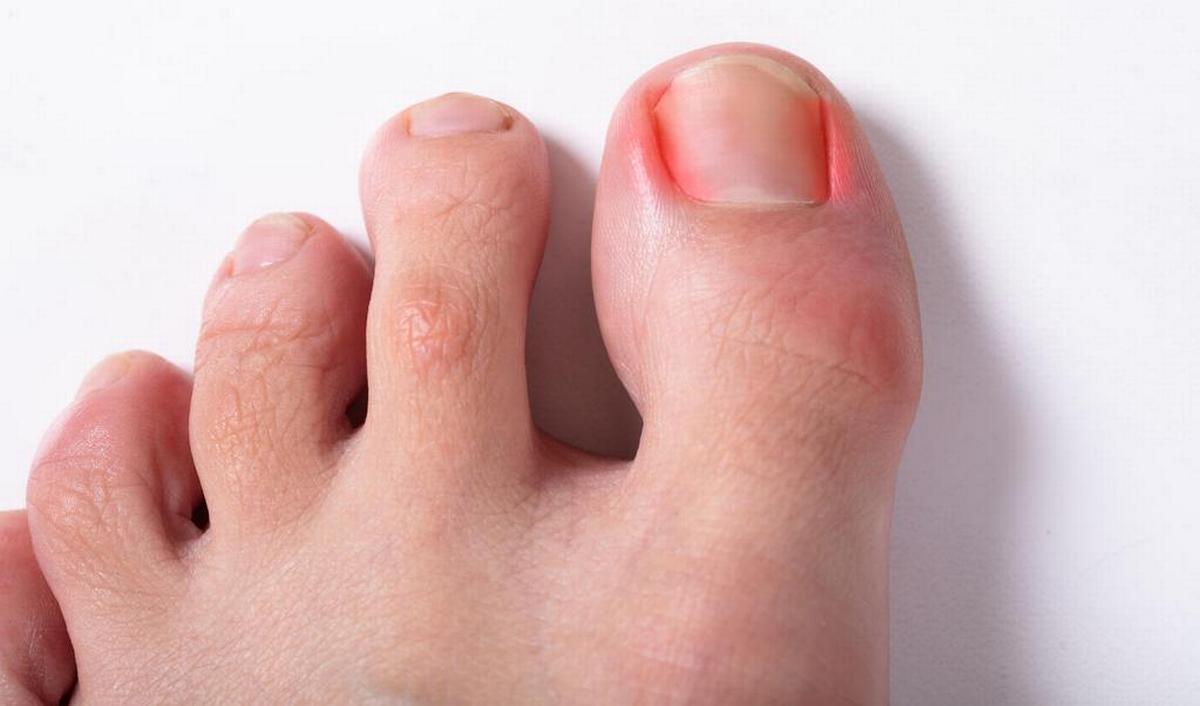If symptoms persist or worsen, it is advisable to consult a pedicurist or doctor. For mild cases, a care product may help calm the skin and improve nail condition. Consider Olivélle’s Nailcare Pen, specially developed for problem nails.
Ingrown nails

Ingrown nails: causes, symptoms, and treatment
An ingrown nail develops when the edge of the nail grows into the surrounding skin. This often causes pain, swelling, and sometimes infection. It usually affects the big toe. The medical term is unguis incarnatus.
How does an ingrown nail develop?
There are several causes that can lead to ingrowth. Cutting the nail too short or in a rounded shape increases the risk. Tight shoes or pressure on the nail edge can also trigger the problem. Trauma or injury to the toe may damage the nail plate, resulting in ingrowth. Sometimes hereditary factors play a role, such as a curved nail shape or abnormal toe alignment.
How to recognize it?
The first symptom is usually pain at the nail edge, especially under pressure. The skin around it becomes red and swollen. Sometimes the area feels warm or throbbing. If infection occurs, pus may develop. In later stages, granulation tissue (“proud flesh”) can appear. Walking or standing becomes more difficult, and even light contact from a sock or blanket can be painful.
What can you try yourself?
At early stages, soaking the foot daily for 15 to 20 minutes in warm salt water is helpful. This softens the skin and reduces pressure. You can try lifting the nail slightly with a small piece of cotton or dental floss to encourage it to grow out of the skin. Wearing roomy shoes relieves pressure on the toe. Keep the area clean and dry.

Treatment by a specialist
A pedicurist or podiatrist can thin the nail, file it smooth, or place a brace that gradually corrects nail growth. In more severe cases, a doctor may intervene. Sometimes part of the nail is removed. If the problem recurs frequently, phenolization may be performed. In this procedure, part of the nail root is destroyed so that section of the nail no longer grows back.
When should you see a doctor?
If pain persists or worsens, medical attention is recommended. The same applies if there is pus or pronounced redness. People with diabetes or reduced immunity are at greater risk of complications. If inflammation recurs frequently, further evaluation is necessary.
How to prevent it?
The most important measure is to always cut nails straight across, without rounding the corners. Wear shoes that give your toes enough space. Keep feet clean and dry, and change socks daily. If you often stub or compress your toes, it’s wise to change that habit. People with diabetes should have their feet checked regularly by a pedicurist or doctor.
Summary
An ingrown nail is painful but usually treatable. By keeping the toe clean, reducing pressure, and giving the nail enough space, you can often manage it yourself. If the problem keeps coming back, professional treatment is necessary.
For daily care of the skin and nail edges, you can use Olivélle’s Nailcare Pen. This is not a replacement for medical treatment but can help keep the nail and skin healthy and support recovery in a cost-effective way.




